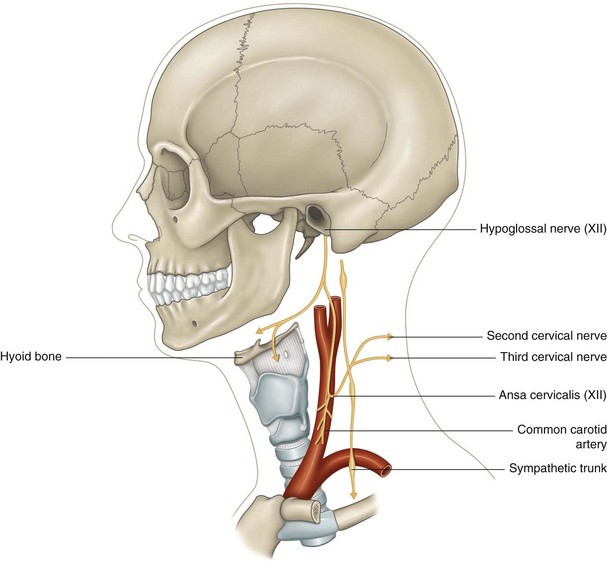23 Neurovascular techniques
One of the key propositions of the neck is that it allows free passage of numerous nerve fibers arising from the skull and the cervical column. These nerve fibers help to regulate the cardiovascular system, viscera of the neck such as the thyroid, and organs of the thorax, such as the heart and the lungs (Fig. 23.1).
23.1 Glossopharyngeal nerve
• sympathetic cervical chain: together with the superior cervical ganglion, it forms the intercarotid plexus.
Refer to Chapter 21 for the technique.
23.2 Hypoglossal nerve
This nerve was described in Chapter 15, in connection with the external carotid artery (Fig. 23.2). Multiple small branches run up and down the carotid artery. We search with our fingers for hardened fibers that do not glide smoothly on the artery wall.
The hypoglossal nerve forms anastomoses with the:
23.3 Vagus nerve
We described a technique for the superior laryngeal artery at the place where, together with the superior laryngeal nerve, it perforates the hyothyroid membrane (see Chapter 22).
Stay updated, free articles. Join our Telegram channel

Full access? Get Clinical Tree










